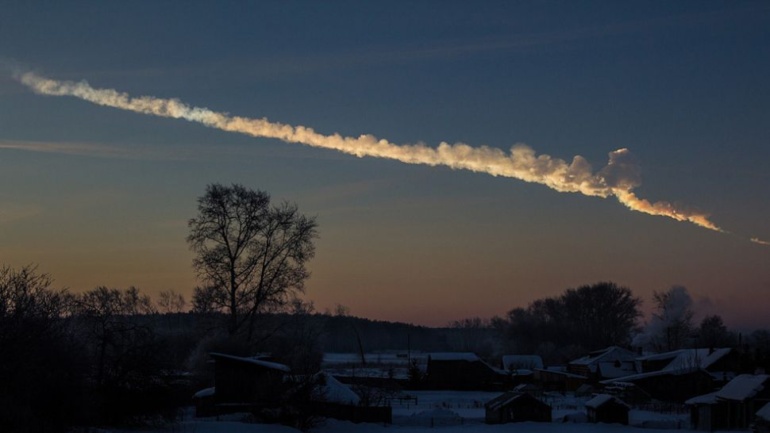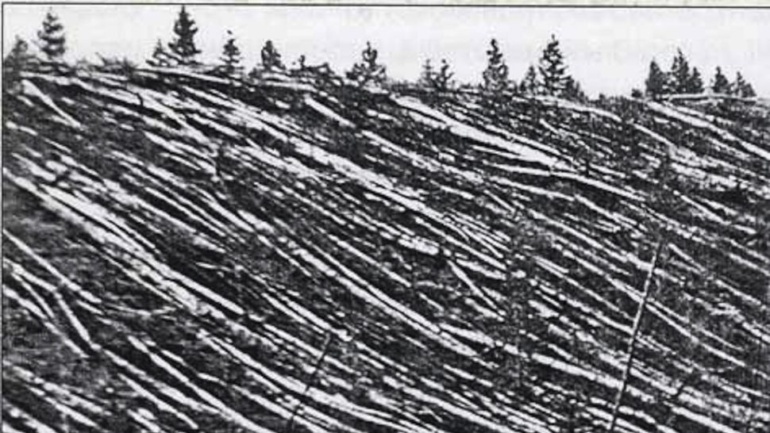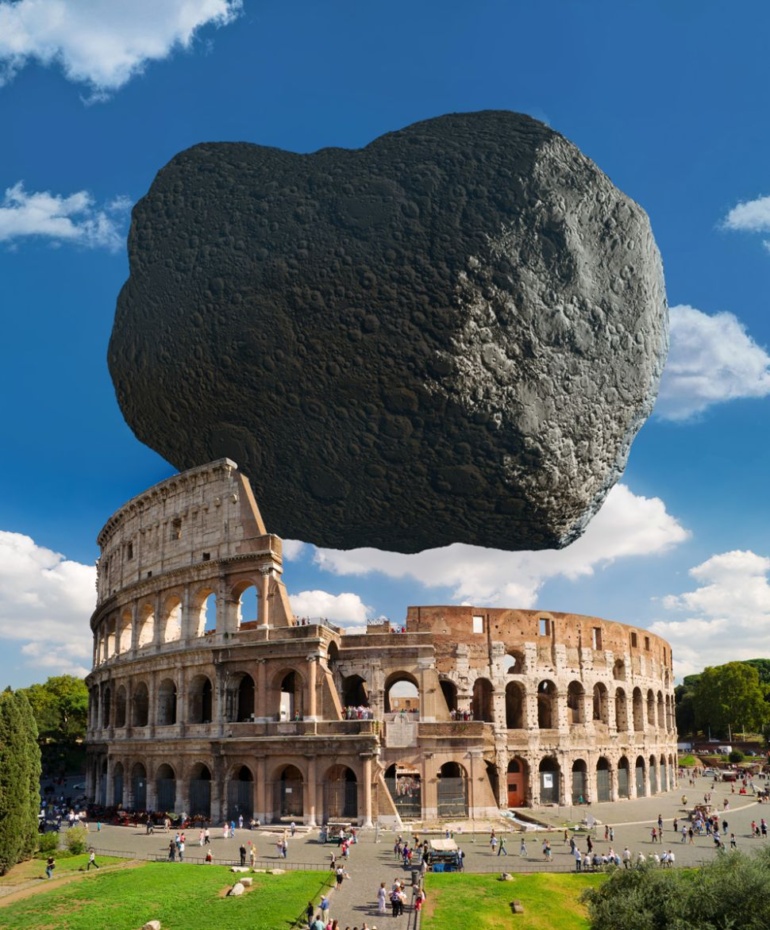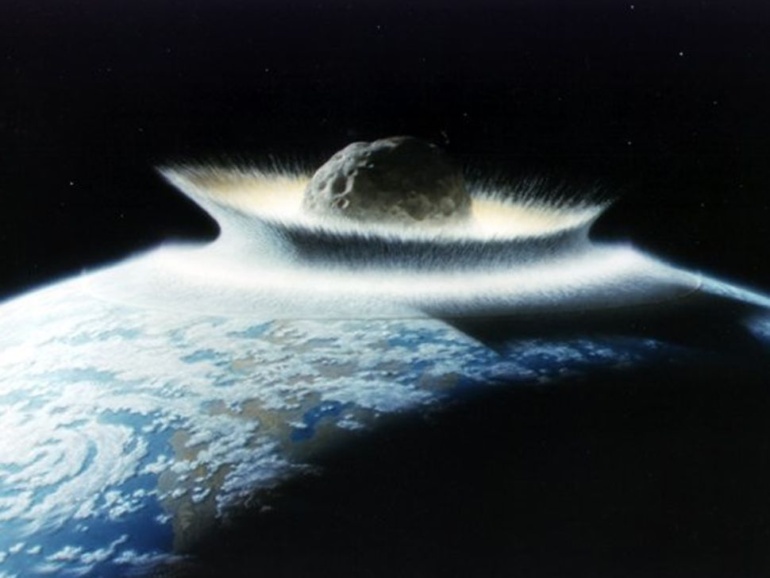
A few days ago, as part of NASA’s DART planetary defense probe, it collided with the asteroid Dimorphos. The first experiment in the history of mankind was successful, but what if there is no protection or if it fails? We translated an interesting article from space.com about this.

People make wishes when the stars fall. This spectacular sight is the result of the combustion of space rocks in the Earth’s atmosphere. But if a huge meteorite is approaching us, most will most likely make a wish to be not near the place of its fall.
But how do you know what size an asteroid should be to be afraid of? What should it be like to destroy an entire city or continent? And is there still a quality of factors that increase the danger?
In space, there are many fragments of space rocks. According to NASA , about 48.5 tons (44 metric tons) of meteorites fall to Earth every day. As a rule, these are stones no larger than a grain of sand, which burn out immediately after entering the Earth’s atmosphere. The Institute of Planetary Sciences has calculated that for a rock the size of sea pebbles to fall on Earth, space rocks would need to be at least five meters wide when they reach Earth’s atmosphere.
However, this rarely happens. According to NASA , a car-sized meteorite collides with our planet about once a year. A stone the size of a football field approaches our planet about once every 2,000 years. But if this happens, what will be the consequences for us?
Let’s look at a few examples to get an idea of what to expect.
1. Chelyabinsk: 20 meters wide, tennis court size
A fireball appeared in the sky near the city of Chelyabinsk in February 2013. It grew brighter and finally exploded at an altitude of about 30 km above the ground. The explosion released ten times more energy than the nuclear bomb dropped on Hiroshima at the end of World War II. The shock wave shattered the windows of thousands of buildings and even destroyed the roof of the local zinc plant. More than 1400 people were injured. Later, a huge piece weighing more than 500 kg and several slightly smaller ones were found in the lake nearby.
Gareth Collins, professor of planetary science at Imperial College London, assured that a space rock the size of the Chelyabinsk meteorite is not a reason to be afraid.
“Yes, there were many injured and quite significant destruction, but it was not some kind of extreme threat to life,” the scientist noted. “The meteorite flew at a rather small angle, so it exploded at a considerable height. It would have been worse if it had entered the atmosphere with a steeper trajectory.”

2. Tunguska: 50 meters wide, the size of an Olympic pool
In 1908, a large asteroid flew over Eastern Siberia near the Tunguska River. It is believed that it had a width of 50-60 meters. This explosion destroyed 80 million trees over an area of 2,150 square kilometers. Eyewitnesses wrote about heatstroke, tremors and a blast wave that threw people into the air. Collins notes that although this asteroid was slightly larger than Chelyabinsk, it released much more energy when it exploded. This is due to the fact that it was ten times more massive. The crater was never found, and the damage was not too significant due to the remoteness of the area from human habitation.
However, if an asteroid of the same size exploded over London or New York, the damage would be much greater. Collins and his team created an online tool that allows researchers and members of the public to investigate the impact of asteroids in different parts of the world by changing the basic parameters: the size of the asteroid, the material of the stone and its speed. For example, if an asteroid the size of Tunguska were to hit London, even the city’s most remote suburbs would be devastated. Trees and hedges would fall, the glass in the windows would break, part of the roofs and even some buildings would be destroyed. But bridges and skyscrapers, most likely, would not have suffered too much.
The damage would have been more severe if the asteroid had been made of denser metal-rich material rather than rock (like Tunguska). “The 1.6 km meteorite crater in Arizona was likely created by an asteroid the same size as Tunguska,” Collins said.

3. An asteroid 100 meters wide, the size of a football field
The larger the asteroid, the more damage it does. If it were over 100 meters wide, it would form a crater no matter what it is made of. The blast wave would also have been much more damaging, because the asteroid would have released most of the energy closer to the ground.
“The asteroid would have evaporated so close to the ground that it would have generated a lot of heat,” Collins said. “This could be enough to melt the ground and start fires in the area closest to the explosion.”
The explosion would destroy buildings up to 15 km away, and windows would shatter over 100 km away. To make matters worse, when a partially burnt stone hits the ground, it sets off seismic tremors that will cause destruction beyond the epicenter. Debris would fall to the ground miles away from the collision site, and fine dust and dirt would hang in the air for a long time.
4. Width 160 meters: what if Dimorphos fell to Earth?
Dimorphos, the target of NASA’s DART asteroid-busting mission, is not heading towards our planet yet. But what would happen if a big rock like Dimorphos crept up on us?
“If [an asteroid the size of Dimorphos] hits London, windows will break all over the southeast of England and the damage in the [Greater London] area will be very severe,” Collins said. “In the center of London, nothing will remain alive because of the impact itself and the power of the explosion.”
The impact crater would have been over 1.6 km wide and over 370 m deep. However, according to Collins, the likelihood of any space rock falling into a densely populated area is very low. Since 70% of the Earth is covered by oceans, people may not be affected.
“If an asteroid hit the ocean, it would create very large tsunamis,” says Collins. But if this happened far out in the ocean, the waves would decrease significantly before reaching the coast.
However, the picture will be different if this happens near the shore. “This will lead to a tsunami wave, which will bring a lot of harm,” the scientist says.
Although asteroids of this size are rare, astronomers have calculated that 60% of asteroids on Earth larger than 140 meters are still unknown.

5. 780 meters wide, the size of Didymos
What about Didymos, 780 meters wide? Now this is a huge danger to humanity. According to Collins’ simulations, upon impact, such an asteroid would form a crater more than 11 km wide and more than 619 m deep. Tremors of magnitude 7.4 on the Richter scale will spread through the earth’s crust and can be felt at a distance of 500 km from the impact site. All windows will be broken at a distance of more than 1600 km from the collision site. If this happened over London, then windows would fly out all over France and the Netherlands.
The good news is that there are far fewer such large asteroids. In addition, astronomers believe that all near-Earth rocks (and comets) larger than 1 km have already been found , and none of them are heading towards Earth yet.

What determines the consequences of an asteroid fall?
Several factors determine how devastating the consequences will be. The most important thing is the mass and speed with which the asteroid streaks through the Earth’s atmosphere before breaking apart or hitting the ground. The exact equation for the amount of energy released by an asteroid’s explosion is its mass times the square of its speed. But this does not only affect the scale of destruction. Let’s take a look at the most important factors.
1. Mass of the asteroid
Astronomers most often describe asteroids by their size, but what really matters is mass (the asteroid’s volume times its density). It is assumed that there are quite significant differences in the density of different types of asteroids. Carbon-rich asteroids (the most common type) can have a density of less than 1.4 grams per square centimeter. Some may even be less dense. Rocky asteroids rich in silicon can be twice as dense as carbon, while asteroids rich in rare metals can have a density greater than 5.3 g/cm3.
This means that a round space rock 20 m wide would have a mass of 6459 tons (5860 metric tons) if it were a carbon asteroid, 12458 tons (11302 metric tons) if it were a rocky asteroid rich in silicon and 24,455 tons (22,186 metric tons) if metal predominated in its composition. In comparison, NASA’s Space Launch System lunar rocket weighs about 2,750 tons (2,495 metric tons).
The denser the asteroid, the more likely it is to survive its passage through the atmosphere, hit the ground, and create a crater.
2. Asteroid speed
Asteroids are carried by the solar system at different speeds. Asteroids moving in more elliptical orbits accelerate as they approach the Sun, reaching greater speeds than leisurely travelers in more circular orbits. Space rocks can hit Earth’s atmosphere at speeds ranging from 11 kilometers per second to 40 kilometers per second, Collins says, with 20 kilometers per second being the average collision velocity.
“The faster the asteroid flies, the more significant the destruction will be,” Collins notes.
3. Angle of reentry
The level of destruction also depends on where and how the asteroid releases most of its energy. This will depend on the height at which it explodes, and this, in turn, will depend on the angle at which it enters the atmosphere.
If the asteroid is approaching at a fairly shallow angle, its journey through the atmosphere will be longer, and so it will slow down and discharge its energy more slowly than if the path were more perpendicular to the Earth’s surface. It is more likely to decay higher in the atmosphere and therefore hit the ground less severely, although it could affect a wider area.
“An asteroid coming in at a steeper angle slows down faster, so it doesn’t have time to give up some of the energy,” says Collins. “It is rapidly approaching the Earth, and the closer the source of the explosion is to the Earth, the stronger the force of the blast wave will be when it reaches the surface.”
4. Where the asteroid falls
According to statistics, each space rock is most likely to fall into the ocean or some sparsely populated area of the planet. Despite humanity’s concerns about overpopulation, most of the Earth is still a realm of nature.
According to Collins, the ocean could soften the blows of even fairly large asteroids, more than 100 meters wide, if they hit quite far from the coast. “An asteroid impact into the ocean is probably the most likely scenario,” he says.






